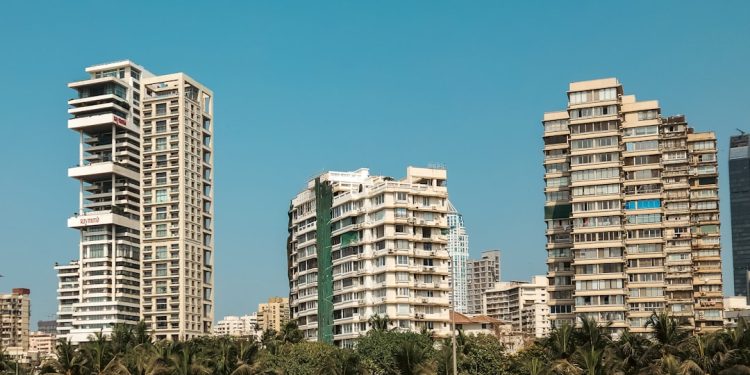No products in the cart.
Navi Mumbai’s Real Estate Boom Linked to New Airport Development
Navi Mumbai's new airport is significantly impacting real estate prices, creating opportunities and challenges for investors and homebuyers alike.
Navi Mumbai, India — The recent inauguration of the Navi Mumbai international Airport is reshaping the local real estate landscape, driving property prices to unprecedented levels. As the region anticipates increased connectivity and economic growth, the impact on the housing market is both immediate and profound.
Officially opened on October 7, 2025, the airport is poised to be a catalyst for urban development in Navi Mumbai. According to the Maharashtra government, the airport is expected to handle over 60 million passengers annually, making it one of the largest in the country. This influx of people is anticipated to spur demand for housing, commercial spaces, and infrastructure improvements, resulting in a significant uptick in property values.
 development” loading=”lazy” />
development” loading=”lazy” />The real estate market in Navi Mumbai has already begun to respond. A recent report from Knight Frank India indicates that property prices in areas surrounding the airport have surged by approximately 20% since the announcement of the airport’s construction in 2018. Locations such as Panvel and Ulwe have become hotspots for both residential and commercial buyers, attracted by the promise of improved connectivity and urban amenities.
 AI
AIThe AI Job Market: A Yale Study’s Surprising Findings
A recent Yale study reveals surprising truths about AI and employment. Are fears of job loss justified?
Developers are taking notice. Major real estate firms like Lodha Group and Godrej Properties are ramping up their investments in the region, unveiling plans for large-scale residential projects aimed at meeting the burgeoning demand. The Lodha Group, for instance, has committed to developing over 5,000 residential units within a five-kilometer radius of the airport, with prices expected to start at ₹7,000 per square foot, a notable increase from previous rates.
Balancing growth with sustainability will be crucial as Navi Mumbai navigates this transformative period.
However, this rapid growth comes with its challenges. While the airport is expected to create thousands of jobs, the rise in property prices may push affordability out of reach for many local residents. Real estate experts caution that without adequate planning and infrastructure development, the region could face significant socio-economic disparities.
Furthermore, the environmental impact of such rapid development is a growing concern. Local activists have raised alarms about the potential loss of green spaces and the strain on existing infrastructure as new projects emerge. Balancing growth with sustainability will be crucial as Navi Mumbai navigates this transformative period.
In the broader context of urban development in India, Navi Mumbai’s airport project reflects a trend seen in other metropolitan regions, where improved transport links are driving real estate demand. Cities like Bengaluru and Hyderabad have experienced similar surges in property values following the establishment of new airports or expansion of existing ones.
 Business Strategy
Business StrategyIndia and UK Revitalize Trade Relations with JETCO Reset
India and the UK have reset their trade relationship through JETCO, launching a new centre focused on connectivity and innovation.
Read More →The government’s push for infrastructure upgrades is also noteworthy. The Mumbai Metropolitan Region Development Authority (MMRDA) is working on enhancing the local transport network, including new metro lines and road expansions, to ensure that the airport’s benefits are widely accessible. This holistic approach could mitigate some of the affordability issues while fostering a more inclusive urban environment.
As the property market in Navi Mumbai continues to evolve, investors and homebuyers must stay informed about emerging trends. Understanding the dynamics of supply and demand, as well as the regulatory landscape, will be essential for making strategic real estate decisions.
The Mumbai Metropolitan Region Development Authority (MMRDA) is working on enhancing the local transport network, including new metro lines and road expansions, to ensure that the airport’s benefits are widely accessible.
Looking ahead, the impact of the new airport extends beyond immediate price increases. It sets the stage for long-term urban transformation, potentially positioning Navi Mumbai as a key player in India’s economic landscape. For investors, the next few years could present significant opportunities, provided they navigate the market carefully and consider both the risks and rewards associated with this growth.











